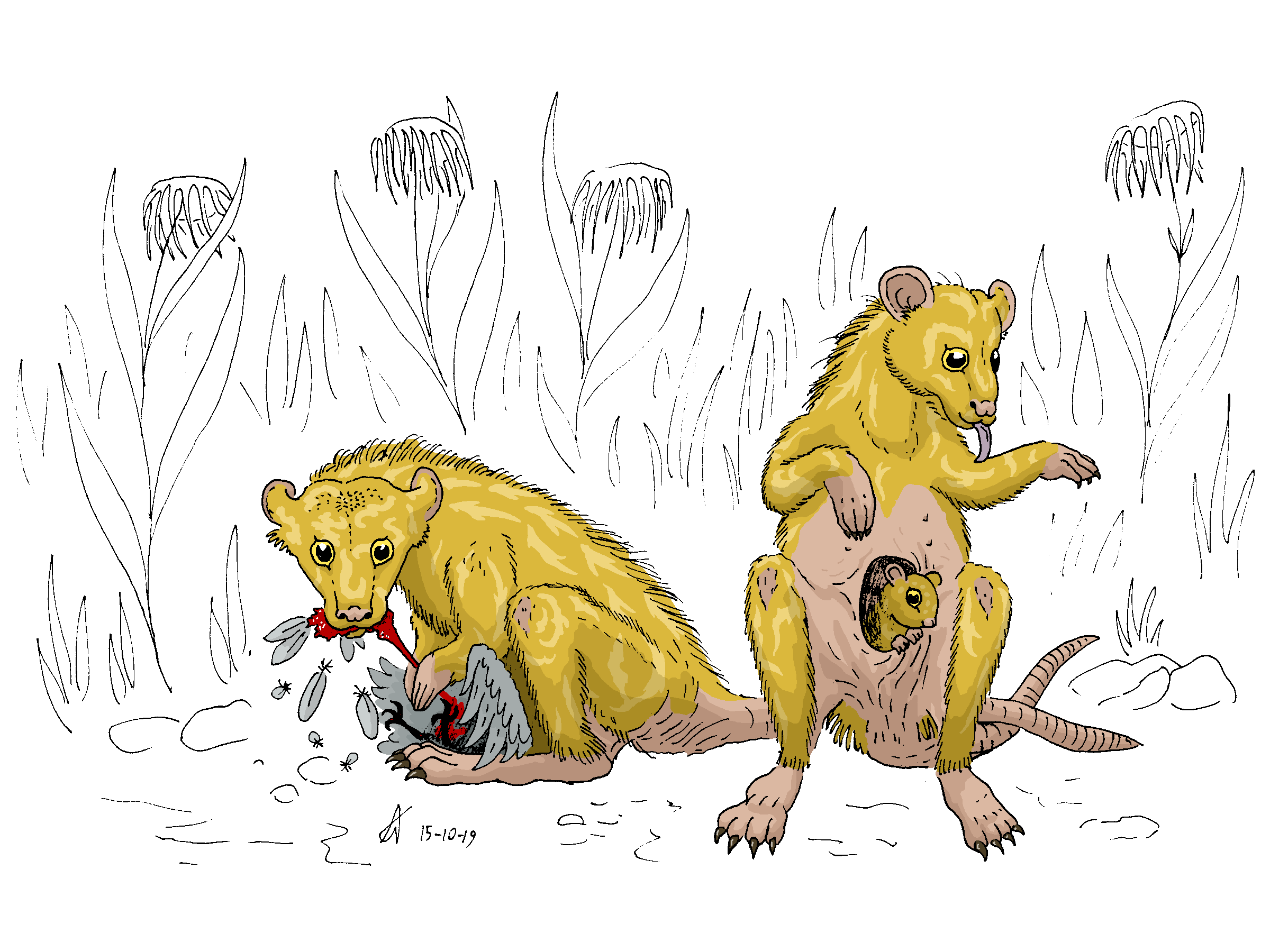A rare example of a predator mammal. An observer from Earth might find analogies with wild cats, which the yenaksim resembles in ecology, behavior, and size, although it belongs to a very different branch of the Cretaceous radiation of mammals; namely, the multituberculates, distinguished by a particular serrated lower tooth that proved very useful to shear through flesh. With their long, springy hindlimbs pressed on the ground, yenaksima lie in wait in the tall grass for a careless bird or a smaller mammal. They are especially active in the twilight hours, when the visually-oriented reptilian and dinosaurian predators are less active. Their eyes provide less acuity than their size would seem to suggest, but their extremely sensitive ears and nose are more than sufficient for them to orient in the shadows. The hands are delicate, with tapering, almost prehensile fingers; unused for locomotion in this bipedal leaper, they are mostly used to restrain the preys just before the fatal bite, which comes from extremely sharp incisors. Yenaksima commonly hunt in pairs, surviving off each other's surplus if necessary, especially when either or both are females carrying cubs in their pouch, which makes hunting smaller preys less practical.
(image and description courtesy of Concavenator)

